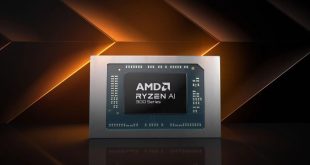Building a PC does not need to be difficult or complicated – and it can be hugely rewarding. Today, we are launching our first system building tutorial. A simple step-by-step video that will take the beginner by the hand and lead them down the path to independence and true knowledge. Your guide is our very own engineering guru, Leo Waldock.
If you've never built a PC for yourself before, it can be a daunting task, but you need to remember that the essentials are fairly straightforward and that factories around the world have turned out hundreds and hundreds of millions of them.
At it's most basic level, you need to populate the mainboard with a CPU and cooler, then add memory, before installing it into your chassis. You can then add a power supply and storage drives as well as a graphics card. Cable everything together and you're done.
Leo has done all of this for you, talking through every part of the process – explaining what you will see and how to approach each task. Make sure you take antistatic precautions.
PLEASE NOTE: In follow up videos, we will do a ‘deep dive' into the techniques surrounding the application of thermal paste, the optimal method for cable routing/tidying and a host of other options which have been stimulating debate across the web for 20 years.
Here's a little kit list for what we used, but the process varies little from system to system:-
- Aerocool DS 200: This is an ATX tower, which gives you plenty of space to build in, without taking up too much desk space or hard earned cash.
- Gigabyte Z97MX-Gaming 5: One of the better micro ATX mainboards around, clearly labelled and straightforward to set up – while still including superior audio and networking for gaming.
- Intel Core i7 4770K: In fact any Core i5 or Core i7 processor that has been designed for a socket 1150 board would do.
- Intel Stock Cooler: We use the cooler that ships with Intel processors because the mounting system is straightforward.
- Avexir 1600MHz DDR3 Memory: We happened to have this to have in the studio, but Corsair, G.Skill, AData, Kingston etc are all equally easy to install.
- Sapphire R9 290 Graphics Card: One area where you will find variation, is in the installation process for your graphics card.
- DVD Re-Writer: One item that many people can live without these days, but we wanted to cover it – just in case it's relevant to you.
- 128GB SK Hynix SSD Boot Drive: Again, you can do this with any Solid State Drive and the process is the same, but we happened to have the SK Hynix to hand.
- 2TB Seagate Hard Drive: Arguably one of the easiest/most standard products in the market when it comes to installation.
- Seasonic Platinum Power Supply: The set up for all high-quality, modular power supplies would be the same, but when you have a Seasonic Platinum to hand you may as well use it.
When you have watched the video, you may decide that you want to get stuck in straight away.
To help you, we have asked Overclockers and YOYOTech to set up bundle codes which will get you a set up very similar to the one you will see Leo working on.
That said, if you're still uncertain, then remember that good local system builders like Dino PC, MESH and PC Specialist can all provided you with a similar gaming specification that's pre-built and guaranteed as a unit – which you can upgrade yourself later.
Discuss on our Facebook page, over HERE.
KitGuru says: While many of you will have performed an upgrade at some stage in your PC's life, it is something quite different to know that the beast under your desk/bed/shelf is 100% your creation. We hope you enjoyed this video and that it has encouraged you to have a go yourself.
 KitGuru KitGuru.net – Tech News | Hardware News | Hardware Reviews | IOS | Mobile | Gaming | Graphics Cards
KitGuru KitGuru.net – Tech News | Hardware News | Hardware Reviews | IOS | Mobile | Gaming | Graphics Cards



Great video. Very informative
I don’t think he connected the back fan : O
The standard cooler normally has some thermal compound in the form of pads already applied, did you remove them?
Also, you did not explain how careful you need to be placing the CPU. And you had no ESD protection or did no touch the case when handling the motherboard…
The standard cooler normally has some thermal compound in the form of pads already applied, did you remove them?
Also, you did not explain how careful you need to be placing the CPU. And you had no ESD protection or did no touch the case when handling the motherboard…
very informative, also very nice build